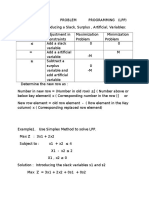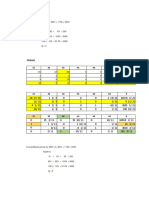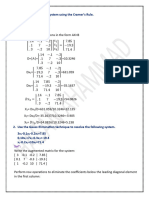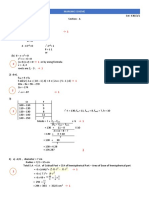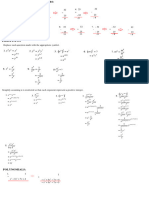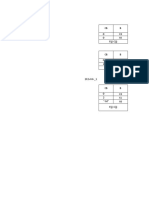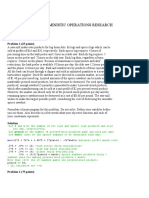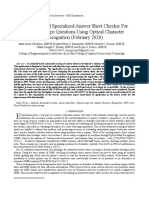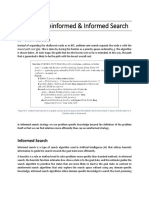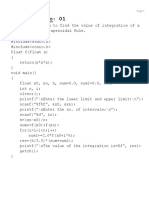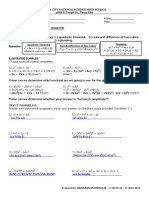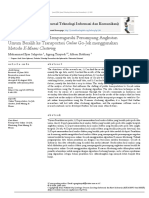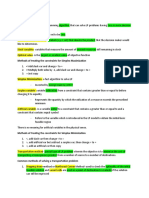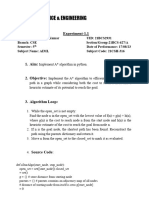0% found this document useful (0 votes)
96 views8 pagesLinear Programming (Simplex Min Method Exercise) - SOLUTIONS
1) The simplex minimization method involves converting inequality constraints into equations using slack and artificial variables, with the artificial variables having coefficients much larger than other variables. 2) The initial table is formed using the coefficients of slack and artificial variables, and the optimum column is found by selecting the most negative entry in the Cj-Zj row. 3) The example problem is minimized using this method, converting the constraints to equations and performing simplex iterations until an optimal solution is found with objective value C = 146.
Uploaded by
Melody DacuyaCopyright
© © All Rights Reserved
We take content rights seriously. If you suspect this is your content, claim it here.
Available Formats
Download as PPTX, PDF, TXT or read online on Scribd
0% found this document useful (0 votes)
96 views8 pagesLinear Programming (Simplex Min Method Exercise) - SOLUTIONS
1) The simplex minimization method involves converting inequality constraints into equations using slack and artificial variables, with the artificial variables having coefficients much larger than other variables. 2) The initial table is formed using the coefficients of slack and artificial variables, and the optimum column is found by selecting the most negative entry in the Cj-Zj row. 3) The example problem is minimized using this method, converting the constraints to equations and performing simplex iterations until an optimal solution is found with objective value C = 146.
Uploaded by
Melody DacuyaCopyright
© © All Rights Reserved
We take content rights seriously. If you suspect this is your content, claim it here.
Available Formats
Download as PPTX, PDF, TXT or read online on Scribd
/ 8


